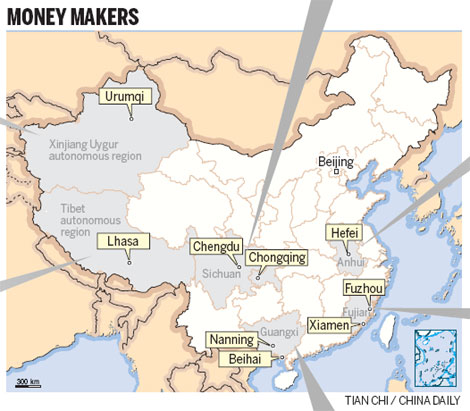
BEIJING, March 22 -- Followings are regions set to be new driving force for China's economy.
Xinjiang Uygur autonomous region

Xinjiang literally means "New Frontier", and it is promising to be a new economic frontier in China's northwestern areas. Xinjiang Uygur autonomous region has abundant oil reserves and it is the largest natural gas-producing region in China. An economic development plan for Xinjiang is expected to come out soon. It will emphasize use of Xinjiang's advantageous resources, including petrochemicals, coal, non-ferrous metals and agriculture. The investment is likely to rise steadily over the next three years, driven by increased financial support from central government and neighboring provinces, and large-scale investment for key projects from State-owned companies. The rising tourism industry will also be a contributor to Xinjiang's economic growth.
Tibet autonomous region

The Tibet autonomous region is becoming another hotspot in China's regional economic development. The plateau region was traditionally dependent on farming and herding. Recently Tibet laid out a plan to explore its mineral resources, while pledging to stick to rational exploitation and minimizing the damage to the natural environment. The government announced plans to achieve "leapfrog development" in Tibet in January, including building the region into a "strategic reserve of natural resources" with the aim of reducing poverty among the Tibetan people. Tibet has more than 3,000 proven mineral reserves and it has China's biggest proven chromium and copper deposits. According to the plan, mineral resources will contribute at least 30 percent to the regional GDP over the next 10 years. Tourism will continue to play a significant role in supporting the economy.